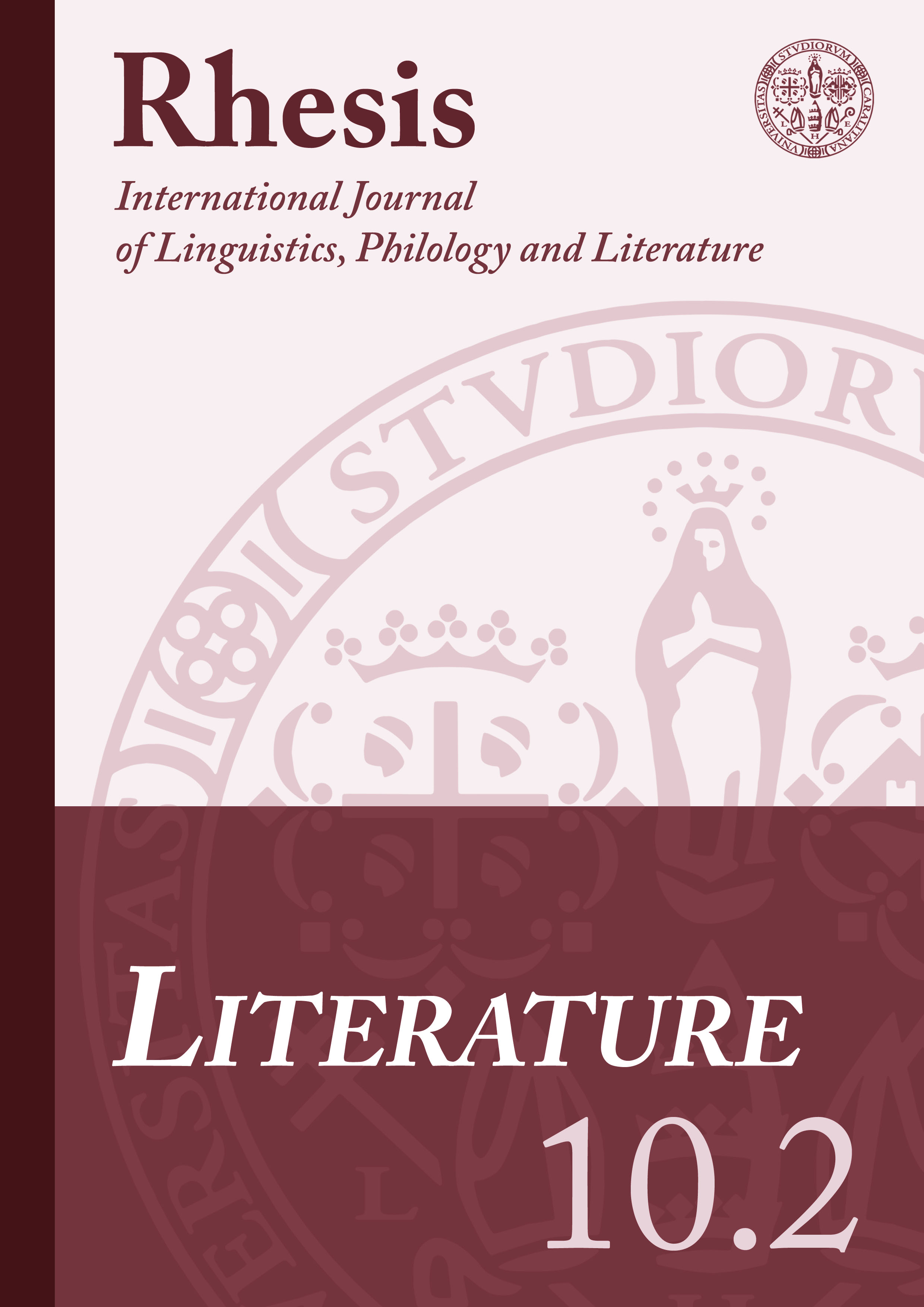Lotta sociale e spazio urbano: In the Cage, Henry James
Abstract
The paper aims to explore the interplay between class conflict and urban milieu that structures In the Cage’s narrative. Starting from the author’s prefaces and some of the most influential sociological essays of the time, this study delves into the spatial counterpoints – streets, houses, parks, neighbourhoods – used by James to represent the social turmoil that upsets Late Victorian London, thus giving shape to the emerging classes’ difficulty in creeping into its hermetic class system. In the nouvelle, such a predicament is effectively thematized by the experiences of an anonymous telegraphist, whose burning desire for social improvement translates into the attempt to physically penetrate and “colonize” the most aristocratic areas of London. As the paper demonstrates, her efforts are met with utter disappointment: she always feels like an intruder in Mayfair’s posh streets, and she ends up seeing nothing but the hall of Park Chambers apartments. Constantly pushed to the city margins, she can only gain access to Maida Vale – the suburban limbo where her friend Mrs. Jordan lives – and Chalk Farm, which by virtue of its position «near town, and at the same time quite secluded» (Walford 1878) functions as a perfect spatial correlative to her liminal social status.
Downloads
References
Bauer, Gero (2016), Houses, Secrets and the Closet: Locating Masculinities from the Gothic Novel to Henry James, Bielefeld, Transcript Verlag.
Carey, James W. (2009), Communication as Culture: Essays on Media and Society, New York, Routledge.
Commenford Martin, Thomas (1894), ‘Electricity in the Modern City’, Journal of the Franklin Institute 138 (3), 198-211.
Hill, Kate (ed.) (2016), Britain and the Narration of Travel in the Nineteenth Century: Texts, Images, Objects, London, Routledge.
Horne, Philip (2019), ‘Henry James on a Bench’, The Henry James Review 40 (2), 155-174.
Hutchinson, Hazel (2013a), ‘«An Embroidered Veil of Sound»: The Word in the Machine in Henry James’s In the Cage’, The Henry James Review 34 (2), 147-162.
Hutchison, Hazel (2013b), ‘«The Telegraph has Other Work to Do»: Reading and Consciousness in Henry James’s In the Cage’, in Marsden, Ben; Hutchinson, Hazel; O’Connor, Ralph (eds.), Uncommon Contexts: Encounters between Science and Literature, 1800–1914, London, Pickering & Chatto, 167-186.
James, Henry (ed. Edel, Leon 1984) [1895-1916], Letters, vol. IV, Cambridge, Belknap Press of Harvard University Press.
James, Henry (2001) [1898], ‘In the cage’, in James, Henry, The Turn of the Screw and In the cage, New York, The Modern Library, 114-212.
James, Henry (ed. Blackmur, Richard Palmer 2011), ‘Preface to What Maisie Knew’, in The Art of the Novel: Critical Prefaces by Henry James, Chicago-London, University of Chicago Press, 140-158.
Larsen, Haley (2018), ‘The Spirit of Electricity: Henry James’s In the Cage and Electric Female Imagination at the Turn of the Century’, Configurations 26 (4), 357-387.
Laughlin, Thomas A. (2010), ‘The Double Life In the Cage: The Queering of the Social in Henry James’s Late Short Fiction’, The Henry James Review 31 (2), 154-168.
Lubrano, Annteresa (1997), The Telegraph: How Technology Innovation Caused Social Change, New York, Routledge.
Menke, Richard (2008), Telegraphic Realism: Victorian Fiction and other Information Systems, Stanford, Stanford University Press.
Patey, Caroline (2004), Henry James e la capitale del moderno, Milano, Unicopli.
Simmel, Georg (ed. Jedlowski, Paolo 1995) [1903], Le metropoli e la vita dello spirito, tradotto da Jedlowski, Paolo; Siebert, Stefan, Roma, Armando Editore.
Tallack, Douglas (1987), Literary Theory at Work: Three Texts, Londra, B. T. Batsford Ltd.
Walford, Edward (1878), ‘Primrose Hill and Chalk Farm’, in Walford, Edward, Old and New London, vol. V, The Western and Northern suburbs, London, Cassel, Pettel & Galpin, 287-300,
Weinreb, Ben; Hibbert, Christopher; Keay, Julia; Keay, John (eds.) (20083), The London Encyclopaedia, London, Macmillan.



